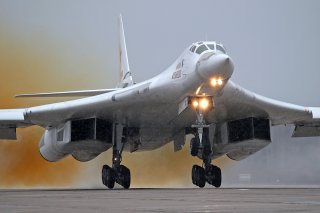How Biden Can End the War in Ukraine
The administration’s highest priority right now should be to incentivize the Ukrainian government to conclude a compromise peace agreement with Russia to provide Putin with a face-saving “exit ramp” to allow Russia to end the war.
These potential Ukrainian electoral restrictions would be vastly preferable to Russia’s initial plan, reported by British intelligence several weeks ago, to install a puppet government in Kyiv after forcibly overthrowing the Ukrainian government and occupying the capital. Furthermore, there have been hopeful signs of late that Russia may be willing to relent on its insistence on the creation of a new, more Russia-friendly Ukrainian government in the interests of expediting negotiation of a peace settlement. In the past, Russia has that Ukraine would not be permitted to join the European Union (which it is currently trying to do) as part of a peace agreement, but Russia might be willing to drop that demand as well in return for Ukrainian agreement to its other peace terms. If Moscow were to drop both of these previous demands, that would represent huge concessions on its part, likely making a peace deal appear much more palatable to Kyiv as it would help ensure continued Ukrainian political and economic independence.
Peace talks between Russia and Ukraine on the Ukrainian-Belarussian border have been ongoing for the past week. The Biden administration should offer to suspend the implementation of all new economic sanctions against Russia, U.S. troop reinforcements to Eastern Europe, and military assistance to Ukraine in exchange for an immediate and sustained Russian ceasefire, a halt to the Russian Army’s advance, and the continuation of serious peace negotiations in order to prevent the conflict from escalating and spreading beyond Ukraine. The United States and other NATO countries could continue to offer humanitarian, financial, logistical, and humanitarian assistance to Ukraine following a ceasefire. In the most hopeful news to date, Russia reportedly provided Ukraine with a final peace offer to end the crisis earlier this week and has issued a ceasefire offer while Zelenskyy issues his response. While Russia’s reported proposal would be difficult for Ukraine to accept, the difference between what both sides are willing to accept is not that great. Zelenskyy has suggested that Ukraine might be willing to agree to full military neutrality and negotiate a compromise with Russia with regards to the status of the disputed Donbass region in Eastern Ukraine as part of a peace settlement. However, if Zelenskyy rejects Russia’s proposal, Putin will likely escalate his military campaign by using more powerful weapons, most notably cyberweapons, to rapidly defeat Ukrainian military forces, in which case Ukraine might cease to exist as an independent country.
Realization of a peace agreement should be followed by the full normalization of diplomatic relations between the United States and Russia, a renewal of the Intermediate-Range Nuclear Forces (INF) Treaty to help satisfy Russian security concerns of U.S. “offensive missiles” in Eastern Europe—including Russian inspections of Aegis Ashore bases in Poland and Romania—the restoration of the Russia-NATO Council, and a landmark U.S.-Russia climate change treaty. In addition, the United States and Russia should then negotiate a Conventional Armed Forces in Eastern Europe (CFEE) Treaty, the main objective of which would be the restoration of the 2021 Russia-NATO status quo in Eastern Europe (excluding Ukraine, of course). This would include a reduction of U.S. and NATO troops in Eastern Europe to no more than 9,000, as was the case in December 2021. with a cap of 9,000 Russian troops in Belarus. In the event that Russia reduces or even eliminates its military presence in Belarus and honors its peace agreement with Ukraine, then the United States and NATO would also reduce or even eliminate their combined troop presence in the Baltic states, Poland, Romania, Hungary, and Slovakia to match Russian troop levels in Belarus. These phased bilateral military force reductions would be similar to the mutual force reductions agreed to by President Kennedy, who agreed to withdraw U.S. nuclear missiles from Turkey in exchange for the withdrawal of Soviet nuclear missiles from Cuba to defuse the Cuban Missile Crisis in 1962.
The elimination of Russian and NATO member military forces in Belarus and Eastern Europe would not return NATO to its pre-1997 status quo, as some have mistakenly asserted, but rather it would return it to its pre-2016 status quo before the Warsaw Summit before which no Western troops were stationed in Eastern Europe. That way, Russia could achieve both of its top security concerns while the United States could continue to ensure the continued security of NATO’s Eastern European members by massively reducing the risk of a Russian invasion—as it would remove Russian military forces from their borders with the exception of the Baltic states and Poland, which share common borders with the Russian Federation. Such a security agreement would be a “win-win” for both sides. The Biden administration could offer to lessen its prewar economic sanctions against Russia in exchange for not only a full Russian military withdrawal from Ukraine, but also for a partial or full Russian military withdrawal from Belarus as well. In the event that Russia increases the number of its troops in Belarus or sends troops back into Ukraine, the United States and NATO could again surge their troop levels in Eastern Europe to a level proportionate with the increase in Russian military deployments while reimposing severe sanctions.
David T. Pyne, Esq. is a former U.S. Army combat arms and H.Q. staff officer with an M.A. in National Security Studies from Georgetown University. He currently serves as Deputy Director of National Operations for the EMP Task Force on National and Homeland Security and is a contributor to Dr. Peter Pry’s new book Blackout Warfare. He may be reached at [email protected].
Image: Wikimedia Commons.

